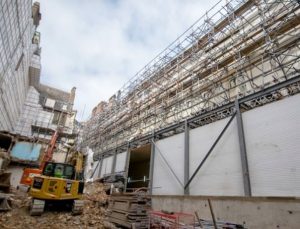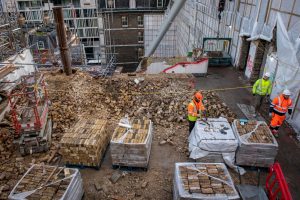Re-modelling a Grade II listed building in the heart of London for a new use, using innovative noise, dust and control methods, and material reuse and circular economy.
Client: Confidential
Project Value: Confidential
Date of Completion: 2023

Grosvenor Gardens is situated in the heart of Westminster, London, situated just northwest of Victoria Station. Formerly known as Grosvenor Gardens House, it was built in 1867 as one of Britain’s first serviced apartment blocks known as Belgrave Mansions as a whole, before the building was converted for commercial use.
The whole development encompassed the comprehensive refurbishment of Grosvenor Gardens House, a Grade-II listed building. The sensitive redevelopment involved partial fabric removal and remodelling to the rear, along with the sensitive reinstatement of residential use at upper floor levels providing 42 high quality residential apartments and retail units on the ground floor, along with a two-level basement providing car parking facilities, a wellness facility and cycle parking.
We were appointed by the Principal Contractor Ardmore for the enabling works and deconstruction works for our expertise in working in challenging central city environments surrounded by highly sensitive receptors.
From the outset of the project, we worked collaboratively with the surrounding stakeholders, Local Authority and client to understand the needs and expectations of all interested parties to the project. This was key to the overall development, as the first contractor on the ground for the deconstruction phase, it is crucial to set a positive tone for the ongoing development once our works are complete.

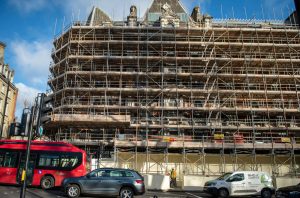
One of the key concerns raised throughout the planning process was noise impacts for both residents and business including a hotel, particularly during the deconstruction phase.
The residents and hotel business situated to the north & west of the project were of particular concern as they were sheltered from traffic noise, unlike the other two elevations on Buckingham Palace and Grosvenor Gardens Road. For this reason, they have low background noise levels. Unfortunately, this was also where all of our logistics – large HGV’s servicing both deliveries and removals of site needed to be positioned in closed off Eaton Lane, as the other locations are TFL red routes with no permissible use or disruption allowed.
We completed visual noise mapping of our proposed methodology to depict the anticipated noise from works as a tool to enable us to choose the least disruptive methods, equipment, sequencing, and mitigation controls.
There were also concerns that the retained façade, keeping the shell of the building up but opening and deconstructing top down the middle and western side would cause noise to be more directional to these most sensitive receptors.
In light of this, we took the proposals from the planning process and developed them into a fully designed acoustic vehicle tunnel and full building height acoustic screen.
Something we are not aware of having been done on any other London Project before. The screen was designed to come down with our deconstruction scaffold floor by floor. And the vehicle tunnel was fully encapsulated for the loading of waste lorries and unloading of deliveries, internal misters to manage dust and track out.
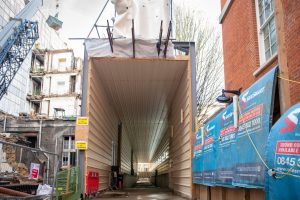
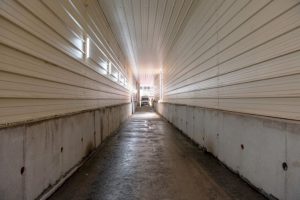
The innovative enhanced acoustic mitigation measures were tested ahead of works commencing by an acoustic consultant independent to the project. Paceconsult conducted an in-situ test to evaluate the sound performance of both the tunnel and acoustic screen test provide 25dBA sound reduction during the floor by deconstruction and a 35dBA reduction when works reach ground floor and basement level.
Considering that noise works in a logarithmic scale and so 3dBA is a doubling or halving of noise, this is incredibly substantial.
We had three 24/7 real-time noise, vibration, and dust monitors placed around the project, as depicted below. These are set up with parameters, which, in the event of an exceedance sends a text and email notification too all operational management team members so that works can be identified, stopped and reviewed for alternative methodology or further controls, where practicable. However, the enhanced acoustic measures and low noise and vibration strategy meant that the deconstruction phase was delivered successfully and well below set parameters (-15-20 dBA).
